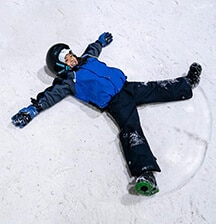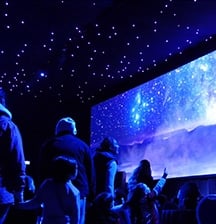
Creating a treasure basket for your little one promotes Heuristic play and natural discovery, explains Yvonne Walus.
Have you ever heard the term “treasure basket” in the context of child development? To adults, a treasure basket looks like a container filled with brushes, pumice stones, and curtain rings. To your baby, it’s a coffer full of magic.
Early education experts say that treasure baskets may be one of the most important toys parents can give their children. Traditional toys may be colourful, cheap, and seemingly versatile — think stacking blocks, teething rings, miniature cars, and dolls — but you may be surprised to learn that they don’t offer enough variety for your developing baby.
What is Heuristic play?
“Heuristic play” was a term first used by child psychologist Elinor Goldschmeid in the 1980s. The word “heuristic” originates from the Greek “heurisko”, which means “serves to discover or promote understanding”. The essence of heuristic play, therefore, is enabling a child to discover or learn something by themselves.
This is why it’s important for the adults to supervise but not to engage when a baby or toddler is exploring their treasure basket. Remember, there is no right or wrong way of playing with a loofah, a makeup brush, or a door wedge. Schedule heuristic play for when your little one is well-rested and fed. Remove all distractions such as TV and other toys, and bring out the treasure basket (which is only available during heuristic play, to maintain its novelty value).
What to put in the basket?
The treasure basket should have low sides, to encourage your baby to reach in. Depending how you feel about artificial materials, your basket can be a big plastic container or a wicker dog bed. Even a shallow cardboard box will do.
Once you have a box, take a few days to assemble 20 objects to store in it (after a few months, this number may grow to 60 or 80). Don’t let the task overwhelm you; start with a few items and build your collection gradually.
There are plenty of interesting unbreakables in the kitchen: A pot lid, measuring spoon, a bamboo or wooden egg cup, a paper towel tube, a wooden spatula, whisks, bottle brushes, coasters, bowls, an empty salt shaker, an oven mitten, a silicone muffin tray, a notebook, a honey drizzler, a tea strainer, an empty (plastic) vanilla essence bottle.
In your wardrobe, you can probably find an old leather purse or handbag, a woollen glove, a shoe horn, and a satin ribbon. And next time you head outdoors, look for large seashells, pinecones, blunt pieces of driftwood, coconut shells, a piece of grass rope, a large leaf.
The important thing is to find everyday objects that are not toys. Think variety of materials: wood, cardboard, metal, leather, rubber. Think texture, shape, size, weight.
Remember safety: Nothing that could be potentially toxic, sharp, or a choking hazard, and clean everything well before its first use.
Ages and Stages
Infant
As soon as your baby is born, you can expose them to the world of textures. Doing tummy time on a sheepskin rug will feel different from doing tummy time on a wool blanket or a velvet wrap. You can also stimulate your baby’s hands and feet by touching the palms and soles with a sponge, or a ball of cotton wool, or a silk scarf.
For different sound experiences, make rattles from boxes containing dried beans, nuts in shells, ping-pong balls, or grains of uncooked rice. (Make sure they are sealed well to prevent choking.)
Baby
When your baby can roll and reach, place interesting objects in the cot with them when they are awake (and you are supervising them; never leave a baby alone in the cot with toys). At this stage, the baby is beginning to feel curious and is no longer content with merely looking at things or having things touch their skin – instead, he or she may want to handle objects actively. Limit the items to one at a time, for short periods, and remove them as soon as your baby tires. Treasure baskets can be introduced as soon as your baby can sit supported. Start with 10 items, adding more every week.
Toddler
As your baby graduates into toddlerhood, they will use their treasure basket in more complex ways. Instead of just touching and mouthing the toys, they need to learn how smaller objects fit into bigger ones and what noise a pinecone makes when dropped into a wooden bowl. Toddlers want to experiment with the objects in the treasure basket: Rolling, filling, emptying, stacking, throwing, banging, dropping. They turn into mini-scientists as they discover gravity and spatial awareness, while honing their hand/eye co-ordination and gross motor skills. When your toddler is done with a heuristic play session, they can help tidy up.
More on playing and imagination from tots to teens:
Play Activities For One-Year-Olds








